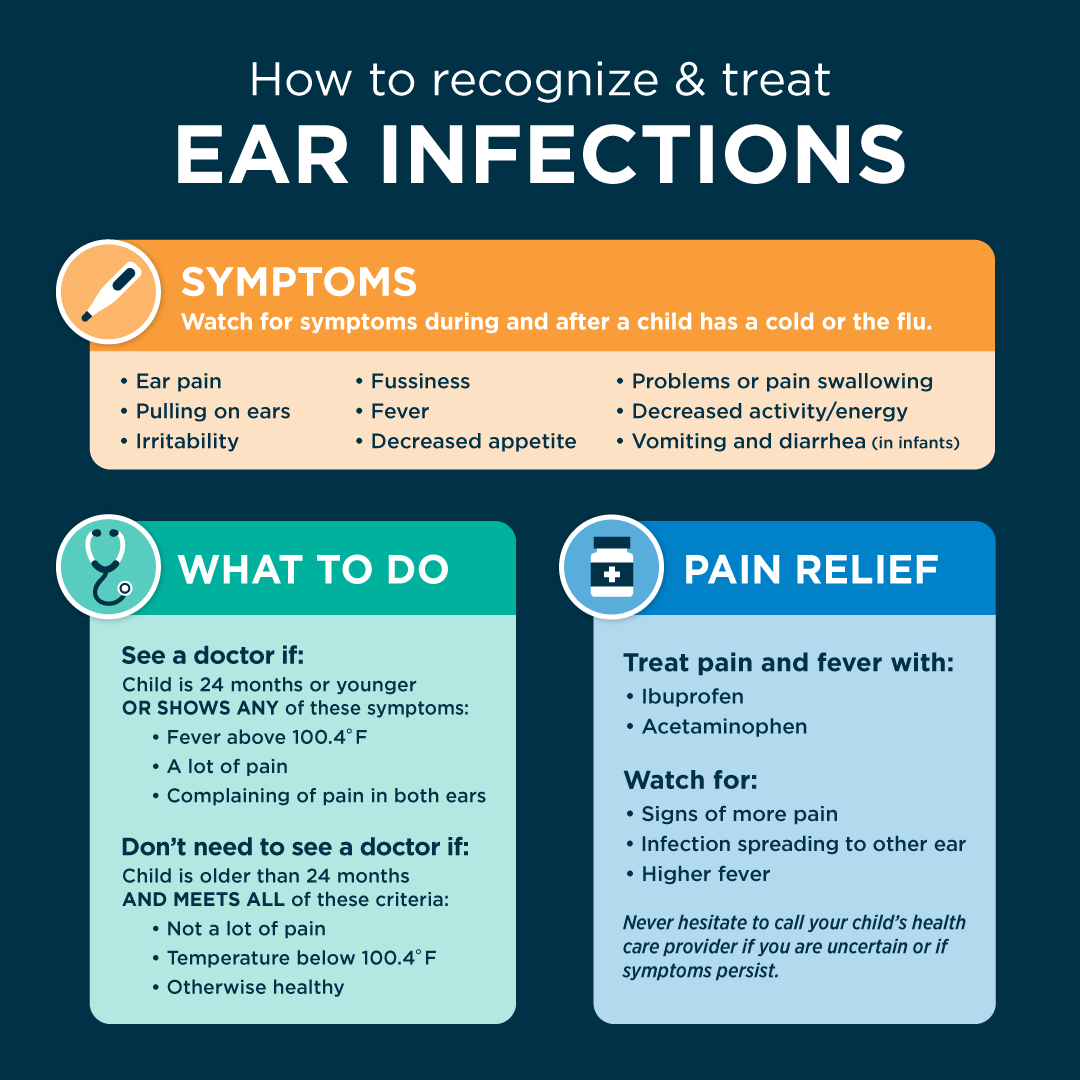Ear infections often follow upper respiratory tract infections, which are infections of the nose and throat. Ear infection treatments are important to avoid too many reoccurrences.

Tubes help the ears drain, which reduces ear infections and makes them easier to treat.
Eustachian tubes connect the middle ear to the throat. Their job is to drain fluid and keep pressure equal on both sides of the eardrum. Ear infections happen when the tubes don’t work well and fluid builds up in the middle ear.
Most babies and toddlers get one or two every year, but some kids get several infections every year because their eustachian tubes don’t work well.
Ear infection treatment for occasional needs may include oral antibiotics. Frequent infections pose a greater problem, said Dr. David Holz, a Marshfield Clinic pediatrician.
Recognize and treat ear infections
Colds are a common cause of ear infections. Children who go to daycare tend to get more because they’re exposed to more illnesses. Secondhand smoke, increased saliva from teething, and feeding babies who are lying down also increase chances of children getting ear infections. Kids who get a lot of ear infections tend to have parents who also had similar issues.
Seeing the doctor is your best bet for younger children and older kids who have certain symptoms. Telltale symptoms usually signal an ear infection, but a health care provider will check for a bulging eardrum to make the decision.
If severe and untreated, it can lead to a ruptured eardrum and/or balance problems.
Minor symptoms sometimes can be treated and watched at home. Check for worsening symptoms daily if you don’t bring your child to the doctor right away.
“Ear infections become worrisome when they happen so frequently that we have to use antibiotics a lot,” Holz said. “We end up dealing with infections that don’t respond to antibiotics.”
When it takes three or four different antibiotics to treat an infection, or when a child needs several rounds of antibiotics per cold and flu season, it’s time to think about ear tubes.
Ear infection treatment: Tubes help ears drain better
Ear tubes are placed through a small incision in the eardrum. The procedure is simple and the child is in and out of the hospital within a few hours.
The tubes hold the hole in the eardrum open so fluid can easily drain out of the ear. Ear infections are less likely when pressure and fluid can’t build up in the middle ear.
Your pediatrician can prescribe antibiotic drops that are given through the ear tubes. Antibiotic resistance is less likely when only the ear is being treated.
Tubes stay in for six months to two years. They usually fall out naturally during that time and the eardrum heals naturally.
“We hope children have grown enough that their natural eustachian tubes work better or that their immune system is better able to fight off colds and infections,” Holz said.
Sometimes they may reoccur and kids need a second round of tubes. Kids who still get a lot of ear infections by age 4 or 5 may have other problems, like large adenoids that block the eustachian tubes.
Kids needing ear tubes isn’t something parents need to be afraid of.
“By the time they have been through so many nights of fevers and crabby babies, most parents are happy their child no longer has pressure and ear pain,” Holz said. “The tubes can make life a lot easier.”

For ear infection concerns, talk to a Marshfield Clinic Health System provider.
Schedule appointment Message your provider
Related Shine365 articles
Make the right call for a sick child
5 things to know about bronchitis
When you should see an allergist
Tonsillitis and treatment: When to have tonsillectomy
Manage asthma in cold weather this winter

